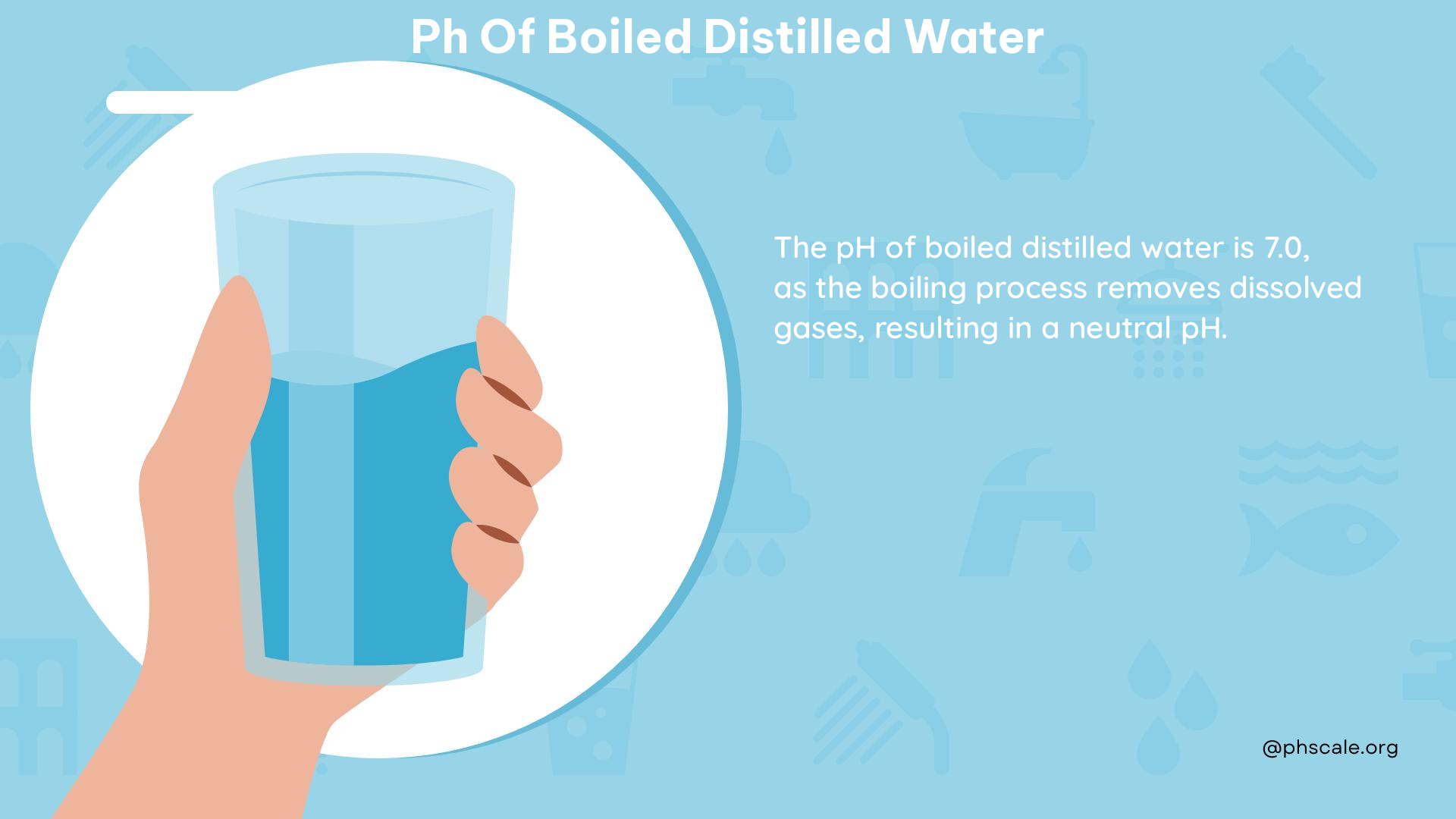The pH of boiled distilled water is a crucial factor to consider in various scientific, medical, and industrial applications. Distilled water, by nature, has a neutral pH of 7, but the process of boiling can introduce changes that affect its acidity or alkalinity. In this comprehensive blog post, we’ll explore the intricacies of the pH of boiled distilled water, its importance, and the factors that influence its stability.
Understanding the pH of Distilled Water
Distilled water, as the name suggests, is water that has been purified through the process of distillation. This process removes impurities, minerals, and other dissolved substances, leaving behind a pure, neutral water source. Immediately after distillation, distilled water has a pH of 7, which is considered neutral on the pH scale.
The Impact of Carbon Dioxide
However, when distilled water comes into contact with air, it begins to absorb carbon dioxide (CO2) from the atmosphere. This absorption of CO2 leads to the formation of carbonic acid (H2CO3), which in turn lowers the pH of the water, making it slightly acidic, typically around 5.8.
Why is the pH of Boiled Distilled Water Important?

The pH of boiled distilled water is crucial in various applications, including:
-
Consistency in Scientific Experiments: Distilled water provides a consistent baseline for scientific experiments, ensuring that any changes observed are due to the specific variables being studied, rather than fluctuations in the water’s pH.
-
Biological Experiments: Distilled water is often used in biological experiments involving cells or microorganisms, as it prevents unwanted reactions or growths that could interfere with the study.
-
Medical Applications: Distilled water is used in intravenous (IV) solutions and other medical applications because its pH is closest to that of human blood, minimizing the risk of adverse reactions.
-
Automotive Applications: The mild acidity of distilled water can contribute to corrosion in automotive applications, such as in car batteries or cooling systems, making it important to monitor and maintain the pH.
Maintaining the pH of Boiled Distilled Water
Ensuring the pH of boiled distilled water remains stable is crucial in many applications. Here are some key considerations:
Preventing Contamination
Distilled water can quickly change its properties due to exposure to air or other contaminants. It is essential to store distilled water properly and minimize its exposure to the environment to maintain its pH and purity.
Using Litmus Paper
Litmus paper can be used to check the pH of distilled water, which helps scientists and researchers determine the acidity or alkalinity of the water and make necessary adjustments.
Common Contaminants and Substances
Several substances can affect the pH of boiled distilled water, including:
- Carbon Dioxide: As mentioned earlier, the absorption of carbon dioxide from the atmosphere is the primary cause of the pH shift in distilled water.
- Iodic Acid: In some cases, distilled water may contain trace amounts of iodic acid, which can also contribute to the water’s acidity.
Solutions and Alternatives
To maintain the pH of boiled distilled water, several solutions and alternatives can be considered:
- Boiling: Boiling distilled water can help remove some of the dissolved carbon dioxide, but it may not completely eliminate the acidity.
- Using pH Meters: pH meters can be used to measure the pH of distilled water, but their accuracy may be affected by the low ionic strength of the water.
- Adding Substances: Adding small amounts of substances like sodium chloride (NaCl) can help improve the accuracy of pH measurements in distilled water.
Conclusion
The pH of boiled distilled water is a complex and nuanced topic, with important implications in various scientific, medical, and industrial applications. Understanding the factors that influence the pH, such as the absorption of carbon dioxide, and the methods for maintaining its stability are crucial for ensuring consistent and reliable results. By following best practices and utilizing the appropriate tools and techniques, researchers and professionals can effectively manage the pH of boiled distilled water and optimize its use in their respective fields.
References
- Westlab Canada. (2023, July 12). The Science Behind the pH of Distilled Water. Retrieved from https://www.westlab.com/blog/the-science-behind-the-ph-of-distilled-water
- Reddit. (2023, September 11). Distilled water pH. Retrieved from https://www.reddit.com/r/chemistry/comments/16g727e/distilled_water_ph/
- Sciencing. (2018, April 16). What Is the pH of Distilled Water? Retrieved from https://sciencing.com/ph-distilled-water-4623914.html
- The Chemistry Blog. (n.d.). What Is The pH of Distilled Water? Retrieved from https://www.chemicals.co.uk/blog/ph-of-distilled-water
- Aquapap. (2023, January 27). What is the pH of Distilled Water? Does the pH of Distilled Water Ever Change? Retrieved from https://aquapap.com/what-is-the-ph-of-distilled-water-does-the-ph-of-distilled-water-ever-change/.
